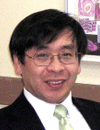Thursday, 24 July 2014
07:30 | Registration | |||
08:30 |
| |||
09:30 | 4D Bioprinting: biofabrication of rod-like and tubular tissue engineered constructs using programmable self-folding bioprinted biomaterials | |||
10:00 | Peptide Inks: Bio-printing Self-Assembling Ultrashort Peptides to Build Nanofibrous Scaffolds for Regenerative Medicine Applications | |||
10:30 | Coffee Break and Networking in Exhibition Area | |||
11:00 | Microfluidic Cell Patterning Technique for Multicellular Dynamics Studies | |||
11:30 | Regulatory Updates on Cellular and Tissue-based Products | |||
12:00 | The Patent Landscape of Bioprinting | |||
12:30 |
| |||
12:45 | Lunch Break and Networking in Exhibition Area | |||
14:00 | Intellectual Property Landscape / Ethics Surrounding Bioprinting Human Parts and Tissue / Regulatory Path Forward - PANEL DISCUSSION | |||
15:30 | Coffee Break and Networking in Exhibition Area | |||
16:00 | Coach leaves Biopolis for NAMC | |||
16:30 | Tour of NAMC | |||
18:30 | Coach leaves NAMC for return to Biopolis | |||
Friday, 25 July 2014
07:30 | Registration | |||
08:30 |
| |||
09:30 | Organ Printing as an Information Technology: Towards Tissue and Organ Informatics | |||
10:00 | 3D Bioprinting – Bioassembly Robots and Bioinks | |||
10:30 | Coffee Break and Networking in Exhibition Area | |||
11:00 | Magnetic 3D Bioprinting for High-Throughput Drug Screening | |||
11:30 | Bioprinting interfaces for 2D and 3D Cell and Tissue models | |||
12:00 | Multiphoton processing - a versatile technology platform for the development of standard biomimetic microenvironments for 3D cell culture | |||
12:30 | Lunch Break and Networking in Exhibition Area | |||
14:00 | A New Approach for 3D Tissue & Organ Fabrication Inspired From Orthopedic Surgery | |||
14:30 | 3D Bioprinting of Human Embryonic Stem Cells | |||
15:00 | Extrusion Printing of Hydrogels with Embedded Cells | |||
15:30 | Coffee Break and Networking in Exhibition Area | |||
16:00 | Easiest Tissue and Organ to Bioprint / Technology Advancement and Innovation for Bioprinting / How far are we realistically from the Clinic? - PANEL DISCUSSION | |||
17:30 | Closing Reception | |||


